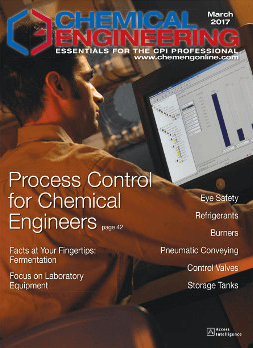Any newly-minted Chemical Engineer will tell you that there remains a large learning curve when entering the process industries, especially if their focus is around controlling the process. Often these new ChemEs have never had classes in process dynamics.
 In a great Chemical Engineering article, Control Engineering for Chemical Engineers, Emerson’s Lou Heavner shares his years of experience as a consultant to aid new chemical engineers in their learning path to effectively control the process and reduce process variability.
In a great Chemical Engineering article, Control Engineering for Chemical Engineers, Emerson’s Lou Heavner shares his years of experience as a consultant to aid new chemical engineers in their learning path to effectively control the process and reduce process variability.
Lou opens noting the role control engineers serve. They:
…try to identify and understand sources of process variability that can impact product quality, and then reduce the variability to mitigate its adverse economic effects.
He provides a brief history of process control from pneumatic & hydraulic based control to electronic, digital control with distributed control systems (DCSs) and programmable logic controllers (PLCs). The changes in technologies required changes in types of engineers sought from mechanical to electrical engineers. However:
Chemical engineers, with their knowledge of process behavior and process requirements, have been working for years in the field of automation and control, and are often able to gain more value out of control systems than others with less process understanding might achieve.
In this article, Lou addresses the concepts of control basics, feedback controllers, control terminology, advanced process control, batch process control, process control in safety and process data.
I can’t cover all the knowledge and experience that Lou shares in the article, so I’ll pick one area, feedback controllers to highlight. Process control:
…usually takes the form of a feedback controller… Some process inputs can be manipulated in order to drive important process observations to targets or setpoints. Other process observations may not be controlled to a target setpoint, but they are not allowed to exceed upper or lower constraint limits. A control-loop includes a measurement of the process observation to be controlled (the PV), a final control element (usually a control valve) that varies the process flow to be manipulated and a controller that makes a move based on where the process observation is relative to its setpoint.
Proportional-integral-derivative (PID) controllers are the predominant feedback controllers used, as long as what is being controlled is not too non-linear or is dominated by deadtime. Lou describes each of the three components—proportional gain and integral and derivative action. He describes the two steps in tuning the loop. The first is identifying the process dynamics through open-loop or closed-loop testing. The second step is to calculate the tuning parameters using guidelines such as lambda tuning.
This recap hardly scratches the service of what Lou shares, and I believe this article is a must read for new chemical engineers entering the process manufacturing & production fields if control engineering is their area of focus.
You can connect and interact with other control and advance control experts in the Improve & Modernize, DeltaV and Ovation groups in the Emerson Exchange 365 community.

